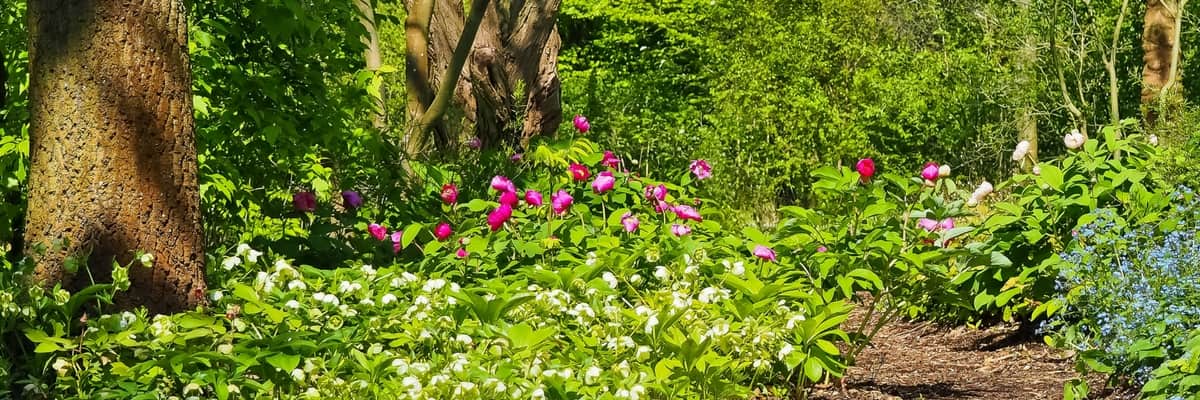
What to plant under a tree?
Solutions and suitable plants
Contents
Planting at the base of a tree may seem like a challenge, with the shade of the foliage, the competition from the roots, and the specific soil conditions. However, many perennial plants, ground covers, and flowers such as cyclamen, periwinkle, or evergreen ivy thrive in these environments. By choosing species suited to filtered light and water availability, it is possible to create a balanced and aesthetically pleasing planting. Let’s explore the best options to green up this often-overlooked area of the garden together.
Under the light-leaved deciduous trees
Light, deciduous trees, such as birch, rowan, or certain fruit trees, are the ones that pose the least problems. If the crown of the tree is not too spreading, the base of the tree receives filtered light, which allows for the growth of a beautiful array of small perennial plants and ground covers, as well as small bulbous plants that bloom in spring before the leaves emerge.
The issue remains with the competition from the tree’s roots, which are much more efficient at drawing water from deep down than the roots of herbaceous plants!
We recommend trying to combine these different plants:
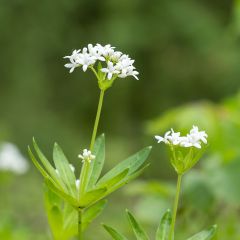
Galium odoratum
- Flowering time May to July
- Height at maturity 20 cm

Symphytum grandiflorum - Comfrey
- Flowering time June, July
- Height at maturity 30 cm
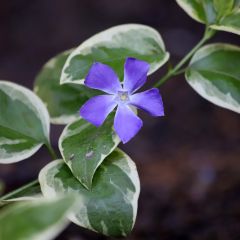
Vinca minor Argenteovariegata
- Flowering time May, June
- Height at maturity 10 cm
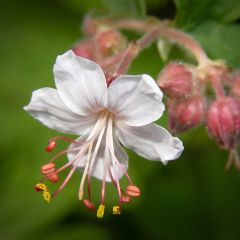
Geranium macrorrhizum Spessart
- Flowering time June, July
- Height at maturity 30 cm
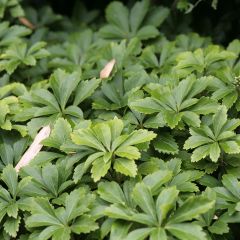
Pachysandra terminalis - Japanese Spurge
- Flowering time July
- Height at maturity 30 cm

Ajuga reptans
- Flowering time May to August
- Height at maturity 15 cm
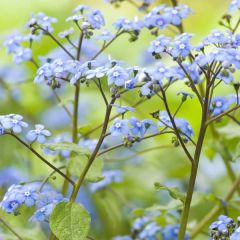
Brunnera macrophylla - Siberian Bugloss
- Flowering time May, June
- Height at maturity 45 cm
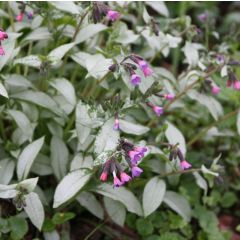
Pulmonaria Majesty - Lungwort
- Flowering time April, May
- Height at maturity 35 cm
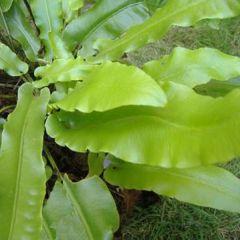
Phyllitis scolopendrium
- Height at maturity 45 cm
In summer, you can also install seasonal plants that thrive in shade, such as impatiens and tuberous begonias.
Under the dense deciduous trees
Dense-leaved deciduous trees, such as lime, ash, and field maple, provide greater shade in summer. However, at the end of winter and the beginning of spring, small early-growing bulbous plants can take advantage of the light filtering through the still naked branches. You can therefore plant small bulbs at the foot of these trees, such as:
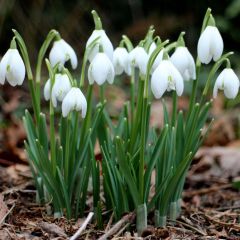
Galanthus nivalis
- Flowering time February to April
- Height at maturity 20 cm
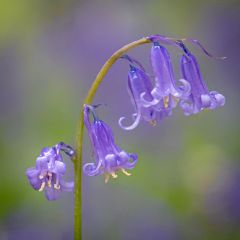
Hyacinthoides non-scripta
- Flowering time May, June
- Height at maturity 35 cm
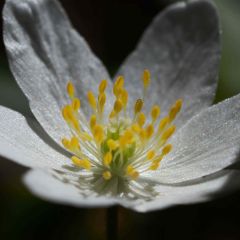
Anemone nemorosa
- Flowering time April to June
- Height at maturity 15 cm
These small bulbs easily associate with evergreen ground cover plants that tolerate dry shade. You can therefore enhance your palette with many plants, including some of the hardiest:
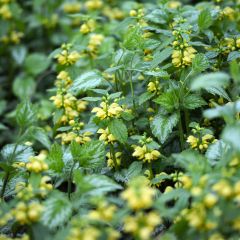
Lamium galeobdolon Florentinum - Yellow Deadnettle
- Flowering time July, August
- Height at maturity 25 cm
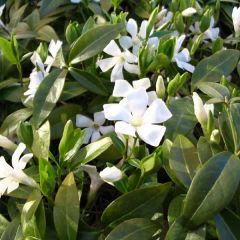
Vinca minor Gertrude Jekyll
- Flowering time April to June
- Height at maturity 10 cm
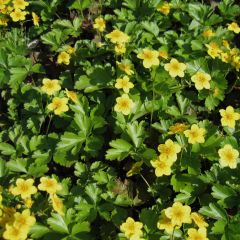
Waldsteinia ternata
- Flowering time May to July
- Height at maturity 15 cm
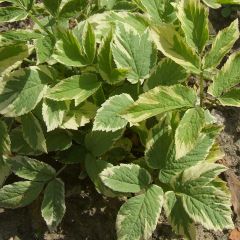
Aegopodium podagraria Variegata
- Flowering time July to October
- Height at maturity 60 cm
Additionally, ivy, of course, and all the perennial ground cover plants for dry shade can be added to this list.
Discover other Asperula
View all →Available in 1 sizes
Available in 1 sizes
Available in 2 sizes
Available in 1 sizes
Under evergreen trees and conifers
Evergreen trees and conifers are the most challenging case: the foliage is present all year round, with roots often both deep and shallow… Nevertheless, by taking care during the planting stage, you should be able to plant successfully after all:
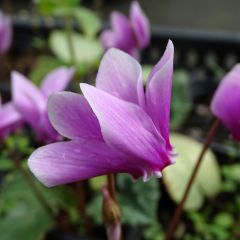
Pink Naples Cyclamen
- Flowering time September to November
- Height at maturity 15 cm

Vinca minor White Power
- Flowering time March to October
- Height at maturity 15 cm
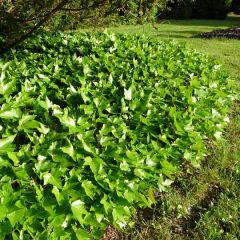
Hedera helix Green Ripple - Common Ivy
- Flowering time October, November
- Height at maturity 4 m
An essential rule: take care of the planting!
To plant at the base of trees, do not imagine, of course, tearing out the tree’s surface roots to install perennials and ground cover!
To plant well at the base of trees, you need to:
- plant at the right time: in spring (March to May) or at the end of the season, September or October. In regions with cold and damp winters, prefer spring planting, as the recovery will be better!
- identify spaces between the large roots,
- create small planting basins using a rake or a small shovel and enrich the soil well (good garden soil, compost) to give the best possible chances of recovery,
- closely monitor watering needs until the plants have fully established.
Little boosts in summer
To give yourself the best chance, consider, during the first summers, to:
- water ground covers from time to time during prolonged dry spells,
- with pruning shears or shears, don’t hesitate to cut back clumps that are drying out or looking unwell, for example, those of pulmonarias that are covered in powdery mildew. Follow up with one or two generous waterings and they will produce new healthy and vigorous foliage,
- not to let “weeds” take hold: install a mulch or hoe regularly between the plants to encourage the penetration of rainwater or watering.
Little tips that can help
There are various ways to improve planting conditions under trees:
- Let in light: depending on the tree in question, it is sometimes possible to remove the lowest branches to clear the lower part of the trunk, or to carry out a thinning cut on the entire tree, which often allows a bit more light to penetrate at the base of the tree and facilitates the growth of ground cover. Use a pruning shear or a branch cutter for this.
- Provide quality substrate for the plants: when planting between the surface roots of a tree, open a planting hole as wide as possible (you will soon be limited!) and richly enrich the soil removed with well-decomposed compost and organic fertiliser to promote the establishment of your plantings.
- Install ground covers such as periwinkle or dead nettle away from the trunk and allow the stems to spread gradually in all directions.
- Plant ground covers in early autumn rather than in spring: the autumn moisture will facilitate their establishment, and they will be better equipped to withstand the first dry summer. However, plan for watering during dry periods at least for the first two summers following planting.
- Every spring, clean the clumps of ground covers and spread a thick mulch rich in nutrients, made of shredded material, compost, or well-decomposed leaf mould, which will provide volume and matter to the surface roots of these small plants.
Difficult cases: the last resorts
In the most challenging cases, such as that of a large tree providing dense shade at its base, where the roots of no plant can compete or almost none, you can simply, rather than leaving the soil bare, spread a mulch, either organic or made of pebbles. You won’t have to worry much about weeding, as adventive plants won’t establish themselves any better than other plants!
Another strategy is to plant ivy at a distance from the trunk and guide the stems as ground cover all around the base of the tree to dress it in evergreen foliage that you will only need to prune when it exceeds the designated limits.
Finally, you can also install temporary pots at the base of the tree, choosing, of course, shade-loving plants, such as hostas, ferns, and tuberous begonias, while ensuring regular watering!
- Subscribe!
- Contents
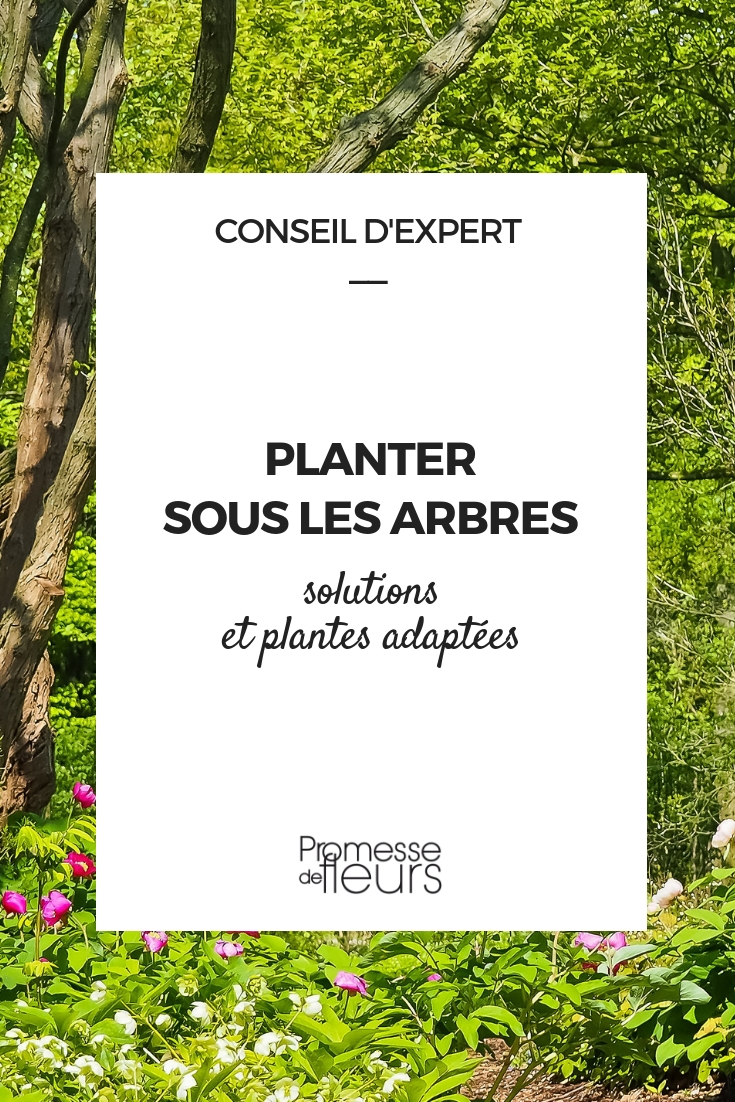































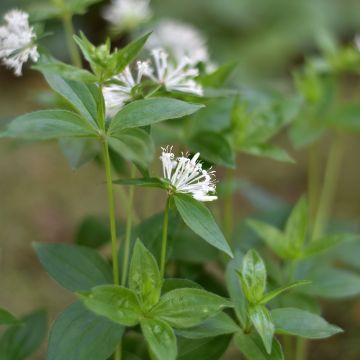
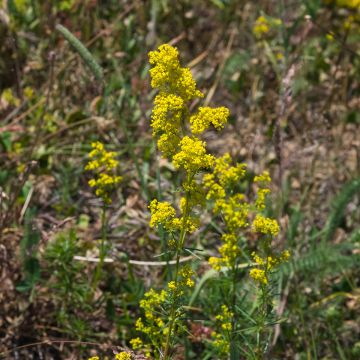


Comments